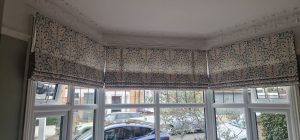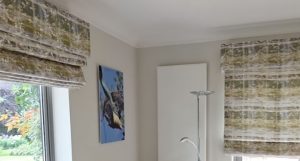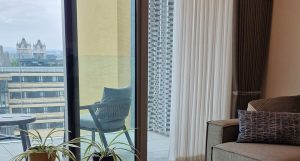When it comes to bedroom storage, most people automatically think of traditional wardrobe doors—sliding panels, hinged wood, or mirrored glass. But there’s a stylish, budget-friendly alternative that’s gaining popularity: using curtains instead of wardrobe doors. This simple design swap can transform a space in surprising ways, blending practicality, creativity, and personality.
Whether you live in a small apartment, want to soften your bedroom décor, or simply fancy a change, replacing wardrobe doors with curtains could be the perfect upgrade. Here are five key benefits to consider.
1. Cost-Effective Solution
Wardrobe doors—especially custom-built or mirrored versions—can be expensive to purchase and install. By comparison, curtains are often far more affordable.
- Lower upfront costs: You can choose from budget-friendly fabrics or reuse textiles you already own.
- Minimal installation: All you typically need is a tension rod or curtain track, which is cheaper and easier to fit than door hardware.
- Easy replacement: If you fancy a refresh, swapping out curtains is faster and cheaper than replacing an entire door system.
This makes curtains a great choice for renters, students, or anyone looking for a budget makeover without compromising on style.
2. Space-Saving and Flexible
In smaller bedrooms or awkwardly shaped rooms, wardrobe doors—particularly hinged ones—can get in the way. Curtains solve this problem.
- No door swing: Curtains open and close without needing clearance space. This is especially useful in tight rooms or narrow hallways.
- Full access at once: Unlike sliding doors that only reveal one side at a time, curtains can be pulled back completely, letting you see and reach everything inside your wardrobe.
- Adaptable layout: If you reorganise or extend your storage, it’s easier to adjust a curtain setup than rebuild a fitted door system.


3. Curtains Instead of Wardrobe Doors Add Warmth and Softness to a Room
Curtains introduce a different texture and atmosphere to your bedroom compared to hard wardrobe doors.
- Softens the look: Fabric adds warmth, making the room feel more inviting and cosy.
- Customisable style: Choose patterns, colours, and materials to match your décor—whether you want minimalist linen, bold prints, or luxurious velvet.
- Light and acoustic benefits: Thick curtains can slightly dampen sound and soften light reflection, making the space calmer and more relaxing.
This visual softness can also help make a bedroom look larger and less cluttered.
4. Easy to Clean and Maintain
Wardrobe doors, especially mirrored or high-gloss ones, show fingerprints and dust quickly, requiring constant wiping. Curtains are simpler to keep fresh.
- Machine-washable options: Many curtain fabrics can be removed and washed at home.
- Dust control: Fabric doesn’t show smudges like glass or polished surfaces, meaning less visible maintenance.
- Quick repairs: A snagged thread or small tear can be sewn up without replacing an entire door panel.
5. Creative and Personal Touch
Curtains give you the opportunity to make your wardrobe area a feature rather than just a piece of furniture.
- Seasonal changes: Swap fabrics for different seasons—light cotton for summer, heavier weaves for winter.
- Layering: Add fairy lights, sheer layers, or tassels for a unique look.
- DIY friendly: Even without sewing skills, you can create a bespoke look with clip rings, fabric glue, or pre-made panels.
This flexibility means your wardrobe covering can evolve with your style over time.
Final Thoughts
Using curtains instead of wardrobe doors might sound unconventional, but it’s a practical, stylish, and affordable option for many homes. They save space, add softness, are easy to clean, and give you complete creative control over the look of your storage area.
If you’re looking for a budget-friendly home improvement that makes a big visual difference with minimal effort, this is a swap worth trying. Not only can curtains replace bulky wardrobe doors, but they can also become a charming feature in your bedroom—proving that sometimes, the simplest solutions are the most effective.


